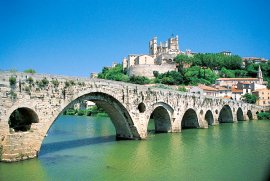 The two provinces of Languedoc and Roussillon hug the Mediterranean from the mouth of the Rhone River to the east bordering on Provence, to the foothills of the Pyrenees and the Spanish border to the west. This region encompasses the departments of the Aude, Gard, Herault, Lozere and Pyrenees Orientales. Flat, sunny beaches and many historical towns make this a wonderful vacation spot that is far less crowded than its neighbor, Provence.
The two provinces of Languedoc and Roussillon hug the Mediterranean from the mouth of the Rhone River to the east bordering on Provence, to the foothills of the Pyrenees and the Spanish border to the west. This region encompasses the departments of the Aude, Gard, Herault, Lozere and Pyrenees Orientales. Flat, sunny beaches and many historical towns make this a wonderful vacation spot that is far less crowded than its neighbor, Provence.
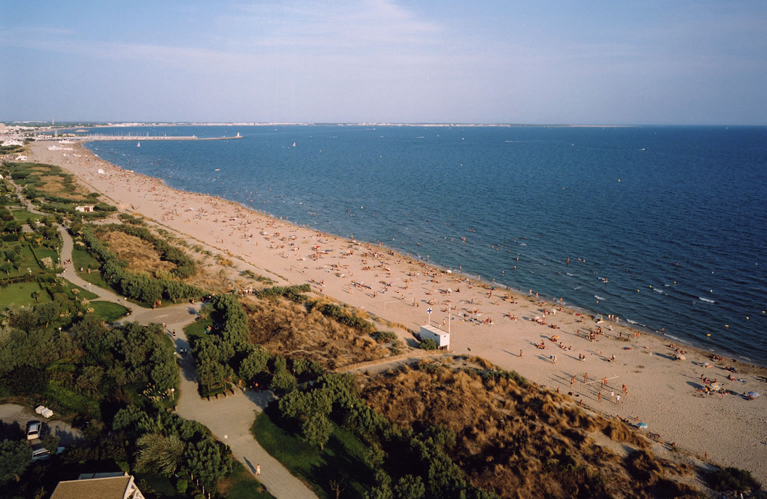 Historically, Languedoc was an independent state with its own language: Occitan. It still takes pride in its own traditions and heritage. Roussillon was a Spanish possession until 1659 and it too is proud of its Catalan heritage and traditions. You will notice the Spanish influence in its food and architecture.
Historically, Languedoc was an independent state with its own language: Occitan. It still takes pride in its own traditions and heritage. Roussillon was a Spanish possession until 1659 and it too is proud of its Catalan heritage and traditions. You will notice the Spanish influence in its food and architecture.
The area, now known as Languedoc-Roussillon is a charming mix of Ancient and modern, brilliantly exemplified in Montpellier, capital of the Region. Some other cities of note are Nimes, home to the Pont du Gard and bullfights, Carcassonne, one of the best preserved medieval cities in the world, and Collioure, a quaint fishing village, favored by painters Matisse and Derain.
The Cote Vermeille (meaning vermillion Coast because of the abundant reddish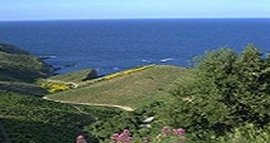 rocks of the headlands) offers spectacular views on its twisting drive to the Costa Brava of Spain. Towns worth visits along the Cote Vermeille are Argeles-Plage with its long sandy beach and the largest camping center in Europe, Collioure, and Cerbere, which still flies the Catalan flag.
rocks of the headlands) offers spectacular views on its twisting drive to the Costa Brava of Spain. Towns worth visits along the Cote Vermeille are Argeles-Plage with its long sandy beach and the largest camping center in Europe, Collioure, and Cerbere, which still flies the Catalan flag.
 For nearly 300 kilometers, the Canal du Midi and Canal de la Robine, the “Canal du Rhône à Sète” and the Petit Rhône offer many opportunities for discovering the region and its inhabitants. They go past wonderful places of interest, the pink flamingos and bulls of the Camargue, lagoons and small fishing ports.
For nearly 300 kilometers, the Canal du Midi and Canal de la Robine, the “Canal du Rhône à Sète” and the Petit Rhône offer many opportunities for discovering the region and its inhabitants. They go past wonderful places of interest, the pink flamingos and bulls of the Camargue, lagoons and small fishing ports.
The Canal du Midi, built in the 17th century, is a UNESCO World Heritage site and flows through the Aude hinterland, close to historic cities such as Carcassonne and Narbonne. After leaving Béziers, it flows into the Etang de Thau, then on through the Camargue, alongside towns such as Aigues Mortes, Saint Gilles and Beaucaire.
Languedoc-Roussillon Tourist Board 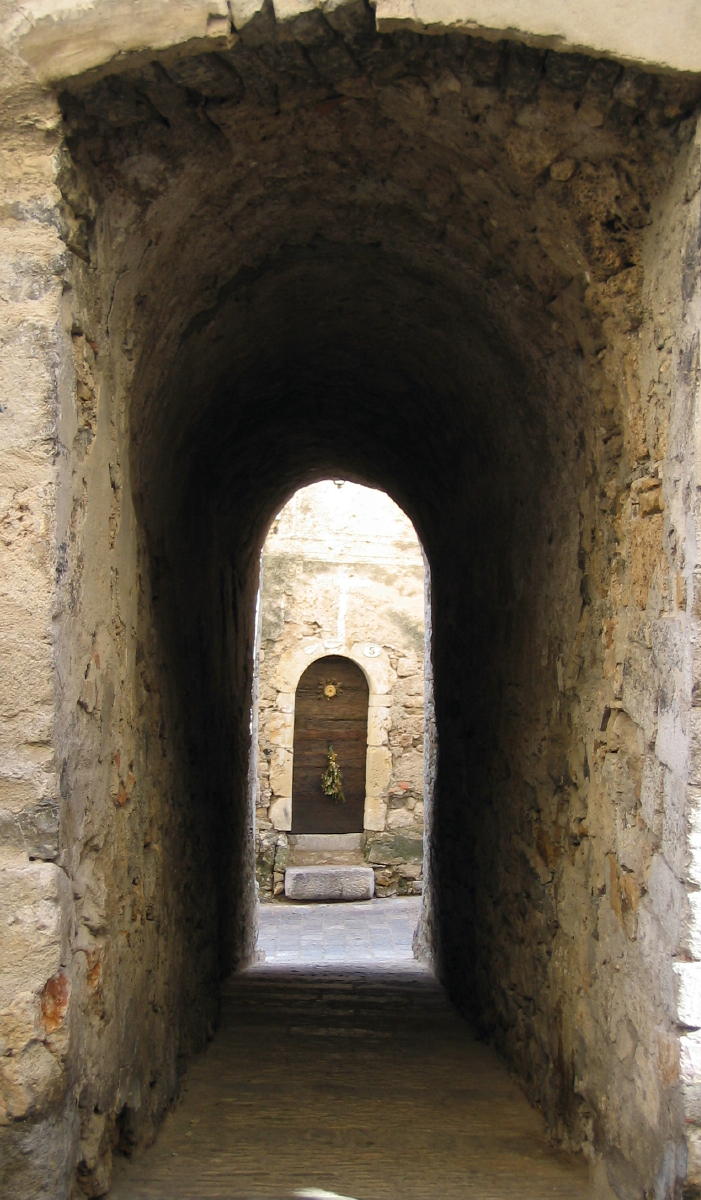
Acropole – 954/960 avenue Jean Mermoz CS 79507
34960 MONTPELLIER Cedex 2
Tel +33 467 200 220
contact.crtlr@sunfrance.com
In the next few paragraphs, I will give you a taste of the wonders of each department, including the food specialties that make up the cuisine of Languedoc Roussillon.
Map of Languedoc Roussillon
The Aude is Cathar Country, whose most notable towns are Narbonne and Carcassone. Symbolic of the eventful history of Languedoc, the Cathar citadels are a moving relic of a tragic past. For fortification, the citadels are perched on the bare mountain side on dizzying rocky and desolate areas.
Not-to-be- missed Sights in the Aude:
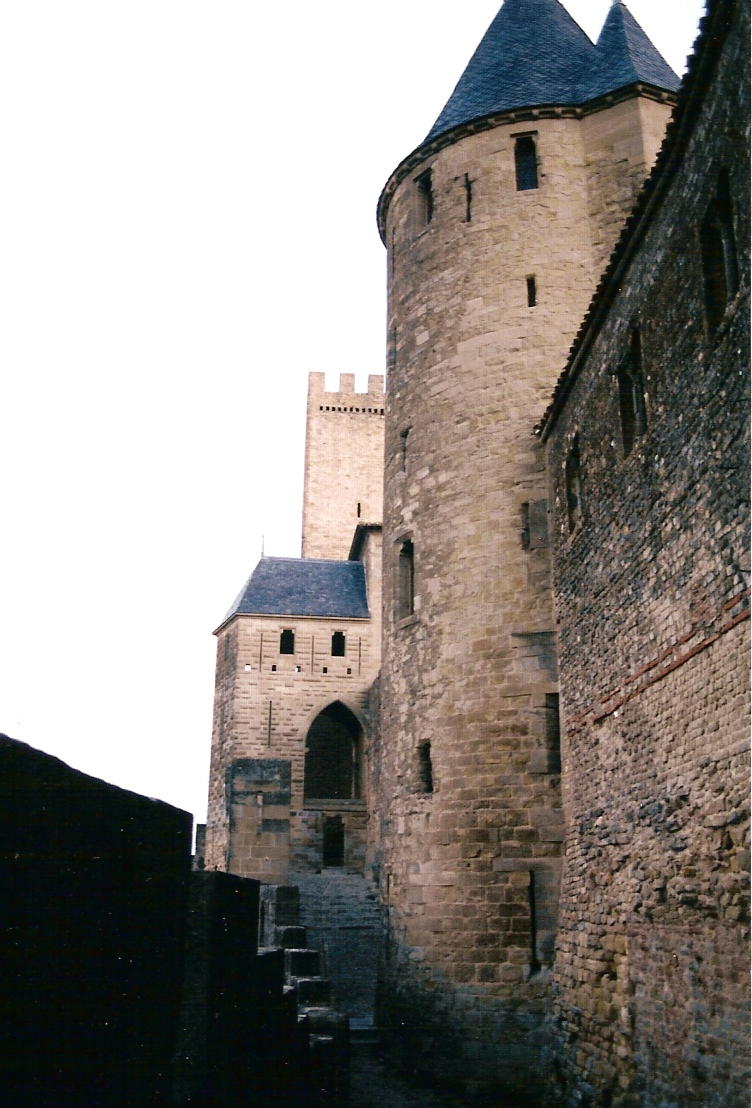 The city of Carcassonne has been a UNESCO World Heritage Site since 1998. The best preserved of European medieval cities, it has two parallel ramparts and many towers.
The city of Carcassonne has been a UNESCO World Heritage Site since 1998. The best preserved of European medieval cities, it has two parallel ramparts and many towers.
Le château de Peyrepertuse (the castle of Peyrepertuse)
Built on a huge rocky ridge, the skilled construction of this building makes it the most important and remarkable example of military architecture.
Le château de Quéribus (the castle of Queribus)
Built on a steep rocky spur, at an altitude of 728 meters, this castle was the last bastion of resistance in the crusade against the Albigensians (Cathars) in 1255.
There is a one hour visit of the castle, the south east tower and central square keep.
Food specialties of the Aude
Lauragais capon: Produced in the Lauragais, the capon is the most prized exhibit in all the ‘marchés au gras’ (markets dedicated to foie gras and fattened poultry) organised throughout the winter in the Aude region. These castrated fowl weigh around 3.5 kilos and are eaten as part of the Christmas festivities, replacing the traditional turkey.
Castelnaudary cassoulet: Made exclusively from Lauragais produce, cassoulet is traditionally cooked for more than two hours in a pottery dish called a ‘cassole’, made locally at Issel. During the cooking time in the oven, a thick skin forms over the top. This must be pushed into the mixture so that a second skin forms. This procedure is followed 7 times.
Millas: This thick soup made of boiled sweetcorn, cooked in the juices made when preparing blood sausage, is traditionally made by the peasants in the Aude at pig-killing time. ‘Millas’ is eaten hot, fried in a pan, as an entrée with apples or as a dessert, fried and dusted with sugar.

The Gard, is the home of Nimes, Agues Mortes and portions of the wild Carmargue. The Pont du Gard, a UNESCO Heritage site, is the aqueduct built by the Romans to bring water from the spring at Eure d’Uzès to Nà®mes.
While in the Gard be sure to see:
In Nimes, you must visit the Pont du Gard, but be sure to also visit Les Arenes (the Amphitheatre). Built at the end of the first century AD, it can hold 23,000 spectators. It is now used for bull fights. 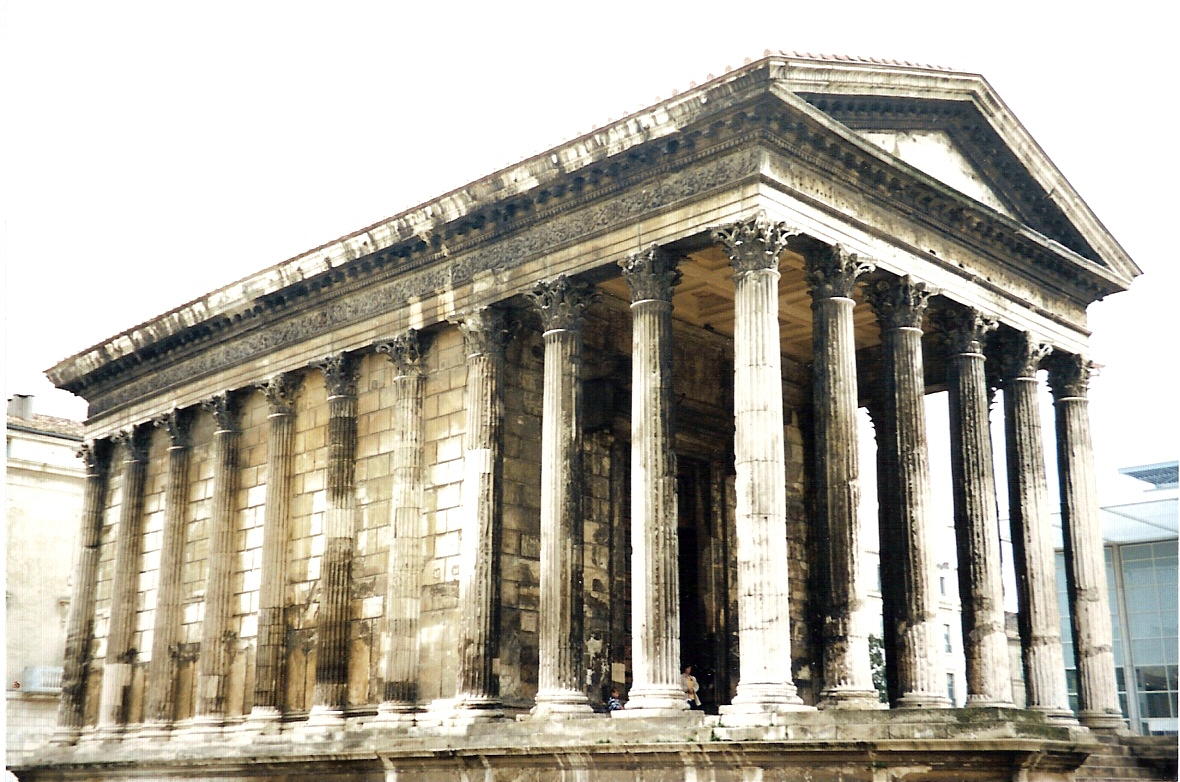 The Maison Carrée is the main temple in the forum of the Gallo-Roman city, the Porte d’Auguste (Augustus’s Gate), which was built at the entrance to the Roman road, the Via Domitia, and the Temple de Diane, which is the last visible remains of the Gallo-Roman sanctuary are all relics of Nimes Roman past.
The Maison Carrée is the main temple in the forum of the Gallo-Roman city, the Porte d’Auguste (Augustus’s Gate), which was built at the entrance to the Roman road, the Via Domitia, and the Temple de Diane, which is the last visible remains of the Gallo-Roman sanctuary are all relics of Nimes Roman past.
Aigues Mortes is a picturesque medieval fortified town in the heart of the Camargue, founded in the 13th century by St. Louis, King of France.
Food Specialties of the Gard
Telline: A small shellfish eaten as an ‘aperitif’ or starter, fried in a pan and flavoured with a lemon sauce.
Brandade de Nà®mes: The gastronomy of Nà®mes combines cod and olive oil to create its famous ‘brandade’ (a dish of flaked salt cod) obtained by crushing the cod in a ‘mortar’. Flavored with olive oil and ‘garrigue’ herbs, ‘brandade’ is served with boiled or croquette potatoes.
Salt: For centuries, man has harvested salt on the banks of the Mediterranean. The ‘Fleur de Sel’ from the Camargue, is made up of fine crystals, and is greatly appreciated by gourmets, improving the flavor of the simplest and most refined dishes.
Camargue Rice: The Camargue produces almost all the French rice grown for home consumption. Thanks to the dykes on the Rhône, rice growing has become an indispensable part of the Camargue ecology. Rice is often the accompaniment to Languedocian cuisine: ‘gardianne de taureau’ (bull stew), squid with ‘rouille’ sauce and numerous fish and meat dishes.
Camargue beef: This strong meat is eaten as ‘gardianne’ (marinated in wine) or grilled, usually during the bull-fighting festivals in the Petite Camargue.
La Tapenade: a purée of black or green olives, mashed up with fillets of anchovy, mustard and spices, it makes a delicious paté. It is served on toast, flavoured with garlic and warmed up, in little tarts, as an aperitif.
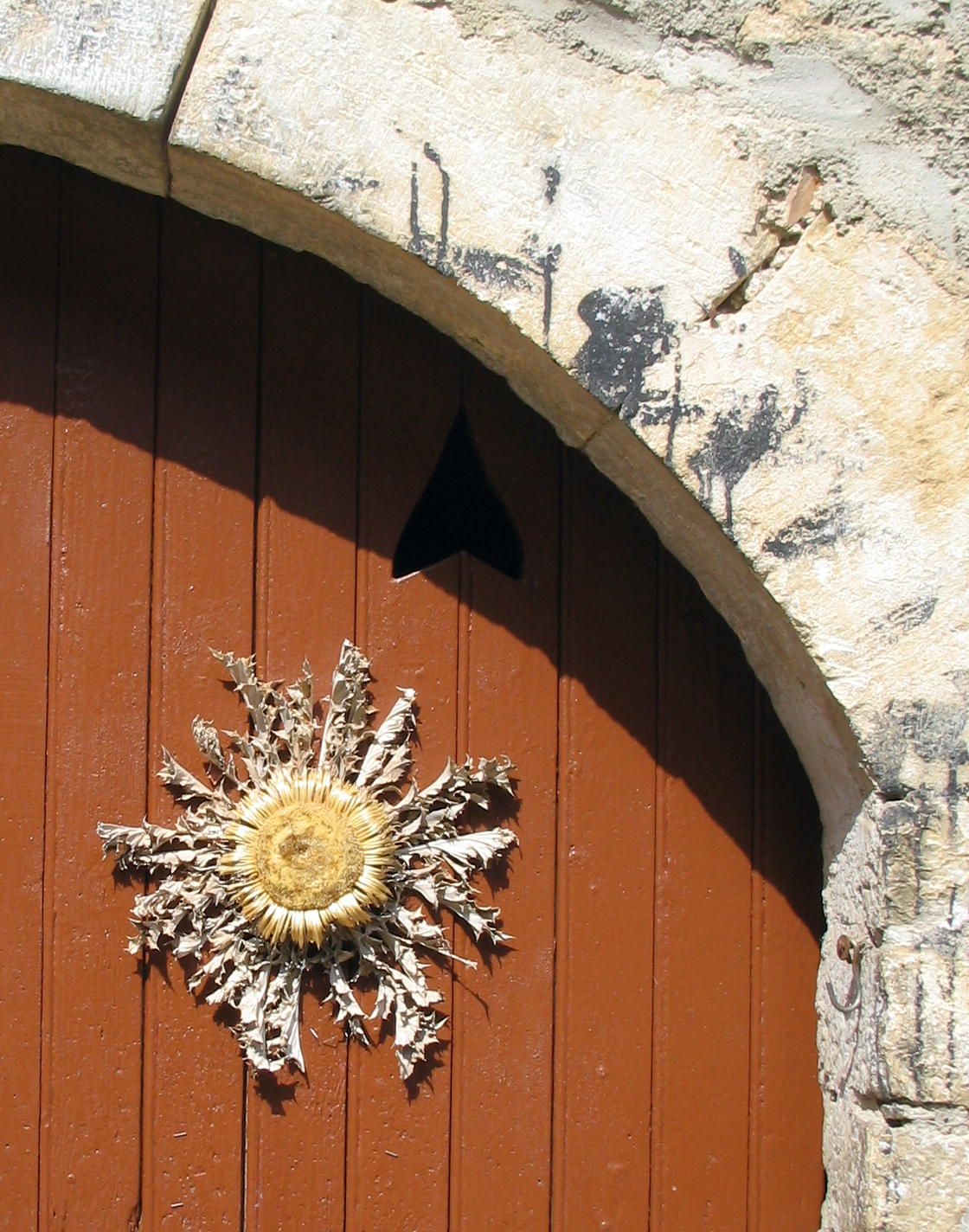 The Herault boasts the capital of the region, Montpellier, a lovely city that has blended the ancient with the modern in a charming and seamless way. It is a city to be admired for its dedication to beauty and history and well worth a visit. It is also known for its resort towns of La Grande-Motte and Le Cap d’Agde, both possessing everything a beach resort should… as well as casinos.
The Herault boasts the capital of the region, Montpellier, a lovely city that has blended the ancient with the modern in a charming and seamless way. It is a city to be admired for its dedication to beauty and history and well worth a visit. It is also known for its resort towns of La Grande-Motte and Le Cap d’Agde, both possessing everything a beach resort should… as well as casinos.
Some of the not-to-be-missed sights in the Herault are:
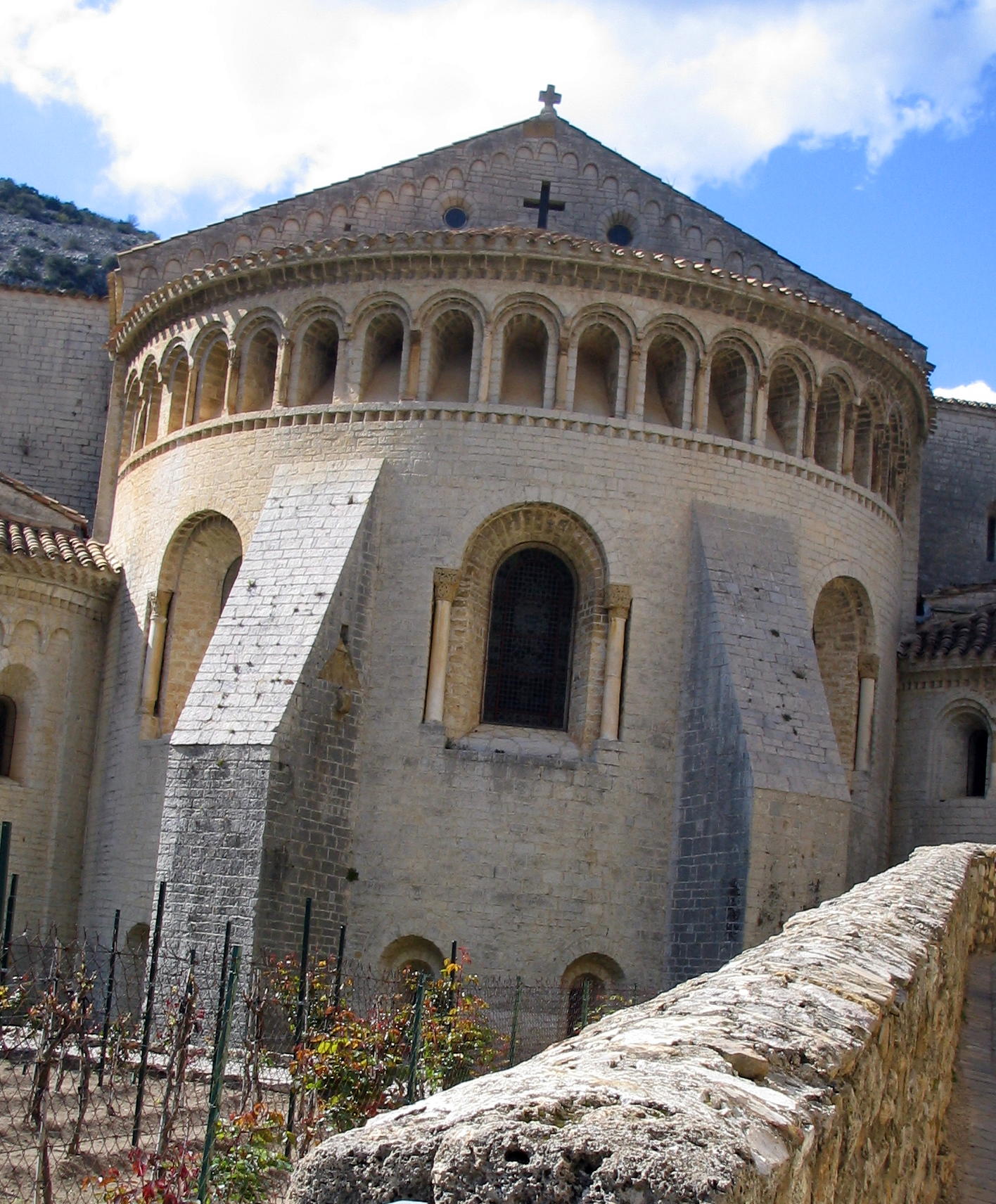 Saint-Guilhem-le-Désert is set in a wild and beautiful setting. This little medieval town boasts the most beautiful abbey in the Herault region: the Abbey of Gellone built in the 11th century.
Saint-Guilhem-le-Désert is set in a wild and beautiful setting. This little medieval town boasts the most beautiful abbey in the Herault region: the Abbey of Gellone built in the 11th century.
Cathédrale de Maguelone (Saint Pierre’s Cathedral) is set on an island which was linked to the land in the 18th century. Maguelone has been a Catholic center since the 6th century. Its powerful cathedral-fortress was destroyed and reconstructed several times.
Listed as one of the most beautiful villages in France, Minerve is set on a rocky spur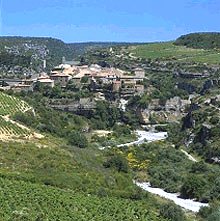 and is one of the last of the Cathar crusade citadels.
and is one of the last of the Cathar crusade citadels.
Food Specialties of the Herault
Bouzigues oysters and mussels: The ‘Etang du Thau’ is today the most important shellfish farming center in the Mediterranean and the leading producer of mussels in France. Eaten raw or cooked, these shellfish are best enjoyed with a little lemon juice, cooked in parsley, stuffed, in a casserole or ‘brasucade’ (mussels cooked over an open wood fire).
Cèbes: The village of Lézignan has been well known since the 17th century for its sweet onion, known as the ‘cèbe’.
Charcuterie from Haut Languedoc: The Haut Languedoc mountains (Herault) are known for their pig farms where the animals are fed on chestnuts, acorns and other natural foods from the surrounding forests. The harsh winter climate is ideal for producing salted meats: blood sausages, ‘bougnette’, ‘fricandeau’, sausages”¦
Petit pâté de Pézenas: These small, crusty pastries are filled with chopped lamb and crystallized fruits, which gives them their distinctive ‘sweet and sour’ flavour.
The Lozere is a wild and beautiful region. One of the most spectacular places in France is Les Go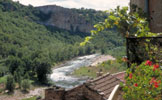 rges du Tarn (Gorges of the Tarn). The river Tarn has its source 1600 meters up on the summit of Mont Lozère. Over thousands of years, it carved its way deeply into the limestone in a corridor 53 km. in length. Cliffs 400 to 600 meters high overhang the river and pretty villages and hamlets lie in the gorges. The Tarn gorges offer: canoeing, kayak, hiking and climbing opportunities.
rges du Tarn (Gorges of the Tarn). The river Tarn has its source 1600 meters up on the summit of Mont Lozère. Over thousands of years, it carved its way deeply into the limestone in a corridor 53 km. in length. Cliffs 400 to 600 meters high overhang the river and pretty villages and hamlets lie in the gorges. The Tarn gorges offer: canoeing, kayak, hiking and climbing opportunities.
Food Specialties in the Lozere
The gourmet food of Lozere owes its reputation to the quality of its many local products. The variety of soils and generosity of nature produce game, trout, mushrooms, as well as regional breeds of beef, lamb and local specialties of cow’s and sheep’s cheese”¦
Laguiole: This mild blue cheese from Aubrac has a reputation that stretches beyond Languedoc-Roussillon. Fresh Tome is used in the traditional recipe for ‘aligot’ (a potato purée).
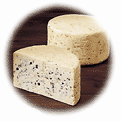 Bleu des Causses: Made with cows’ milk, ‘Bleu des Causses’ comes in cylinders 20 cm. in diameter and 10 cm. high. Its natural crust has a mold and the cheese itself is veined with blue. Eaten mostly at the end of a meal, it is also used in omelettes and ‘cràªpes’, to season pasta or add flavor to grilled meat.
Bleu des Causses: Made with cows’ milk, ‘Bleu des Causses’ comes in cylinders 20 cm. in diameter and 10 cm. high. Its natural crust has a mold and the cheese itself is veined with blue. Eaten mostly at the end of a meal, it is also used in omelettes and ‘cràªpes’, to season pasta or add flavor to grilled meat.
Tome de Lozère: Made with cows’ milk, this cheese requires 4 to 6 months’ maturing. It becomes marbled naturally, as it ages. During production, the whey is collected and boiled to make ‘rebarbe’, a cheese paste served with boiled potatoes.
Aligot: ‘Aligot’ is a potato purée mixed with fresh Tome cheese and garlic. Although at first sight a simple recipe, it does require a certain skill to make it. The trick is to beat the ‘aligot’ for just the right amount of time without overdoing it, so that it retains its ‘stretchy’ appearance. ‘Aligot’ is an excellent dish in its own right, but can also be served with meat or fish.
Aubrac beef and lamb: The farmers of the Lozère mountains raise sheep entirely on their mother’s milk, fodder and cereals. Aubrac beef, fattened through the winter, is eaten grilled, roasted, braised, boiled or even simmered in wine.
The Pyrenees Orientales and the Catalan Coast have Perpignan (once capital of the Kings of Majorca) as its largest city and the charming towns of Collioure, Port Vendres and Banyuls-sur-mer to recommend it.
Dont miss these sights in the Pyrenees Orientales:
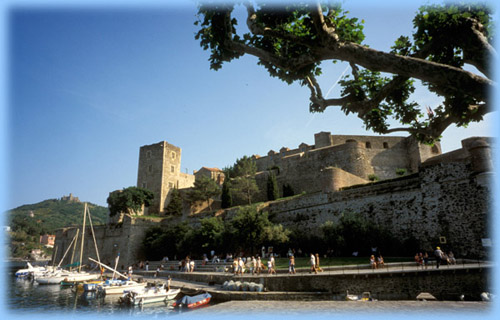 In Collioure, the Château Royal (Royal Palace), dating from the 12th century, was the summer residence of the Kings of Majorca during the 14th century.
In Collioure, the Château Royal (Royal Palace), dating from the 12th century, was the summer residence of the Kings of Majorca during the 14th century.
Banyuls sur Mer, a charming, steeply climbing village is home to the sweet Banyuls wine from the three communes of Collioure, Port-Vendres and Cerbère.
Villefranche de Conflent is an imposing medieval city and citadel reinforced by Vauban, the French architect celebrated for his restoration of military buildings.
Salses-le-Château (The fortress of Salses) is a masterpiece of military architecture, guarding the Spanish frontier. Its massive rose-pink outline rises up from a landscape of vineyards.
Food Specialtes of the Pyrenees Orientales
Anchovies from the Golfe du Lion: 500 tons of anchovies are prepared each year preserved in salt, oil, with olive stuffing, as ‘anchoà¯ade’ (anchovy/mayonnaise dip), in ‘tapenade’ (black olive paste) and other ‘anchovy’ dressings.
Céret Cherries: Céret cherries are the first of the season and their appearance is celebrated in this village in the Pyrénées-Orientales with a festival on Easter Sunday.
Embotits catalans: ‘Embotits’ are intestines filled with chopped and seasoned pork meat and can be eaten fresh, dry or cooked. They are given different names according to their size.
Ollada: This popular soup from northern Catalonia is made from knuckle and tail of pork. To this is added celery from Elne, potatoes, leeks and dried beans. Added flavor is given by ‘sagi’, pork fat that has gone slightly rancid.
Cargolada: A traditional snail recipe from Catalonia, ‘car golada’ is made in the open air on Easter Monday and the Monday of Pentecost. The snails are cooked on a grill and eaten on a piece of bread spread with aioli (garlic mayonnaise).
Boles de picolat: These are balls of chopped meat flavoured with olives, peppers and spices.
Rousquilles du Vallespir: This round cake, often hollowed-out in the centre, is 6 to 7 cm in diameter and covered with a glaze made of beaten egg whites and cooked sugar. The end result is a soft biscuit that can be eaten for breakfast, at tea time, as an aperitif or as a dessert.
Wines of Languedoc Roussillon
 The vineyards of Languedoc-Roussillon are some of the oldest and most extensive in the world. Wines of this region enjoy a varied landscape and very mild climate. They go well with Mediterranean regional produce and enhance the gastronomic riches of the area. Enjoy the rich and varied palette of red, rose, white wines, together with sparkling, natural sweet wines and dry wines.You are invited to visit the “Degustation caves” (wine-tasting facilities or visit many Languedoc Roussillon wine producers
The vineyards of Languedoc-Roussillon are some of the oldest and most extensive in the world. Wines of this region enjoy a varied landscape and very mild climate. They go well with Mediterranean regional produce and enhance the gastronomic riches of the area. Enjoy the rich and varied palette of red, rose, white wines, together with sparkling, natural sweet wines and dry wines.You are invited to visit the “Degustation caves” (wine-tasting facilities or visit many Languedoc Roussillon wine producers
Sparkling Limoux wines are dry, ideal to accompany the whole meal, or demi-sec, to go with the dessert. Blanquette and Crémant are made by a process comparable to the Champagne method and are the oldest sparkling wines in the world.
Corbières is the largest appellation of Languedoc. The reds are intense, full-bodied and rounded, with peppery and spicy notes. They go well with game. The rosés are fresh and fruity on the palate, bright and pleasant. The whites, dry and fruity, or delicately flowery, make an ideal accompaniment for seafood.
The Banyuls wine producing area produces a natural sweet wine, dark and red. With a fine mix of subtle flavours it is wonderful with chocolate gateau. Banyuls wines are also very pleasant as an aperitif with tapenade and muted with foie gras.
Costières de Nà®mes wines are rounded aromatic reds, which are drunk chilled with grilled meats or roast fowl. The more mature Costières should be served at room temperature with meats in sauce, game or cheese. The rosés are full of the sun; the whites delicious as an aperitif or with seafood, grilled fish or goat’s cheese.
Golf in Languedoc-Roussillon
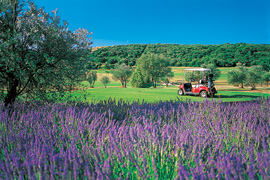 There are numerous opportunities to Golf in this rich and picturesque area. With its Californian-style seaside courses, countryside courses in Lozère and Pyrenean mountain courses, Languedoc-Roussillon has already attracted large numbers of golfing fanatics. Every year, more and more golfers arrive from abroad, particularly from northern Europe. This region has 21 courses, many of which have high-quality reception facilities and lovely golf-hotels.
There are numerous opportunities to Golf in this rich and picturesque area. With its Californian-style seaside courses, countryside courses in Lozère and Pyrenean mountain courses, Languedoc-Roussillon has already attracted large numbers of golfing fanatics. Every year, more and more golfers arrive from abroad, particularly from northern Europe. This region has 21 courses, many of which have high-quality reception facilities and lovely golf-hotels.
I hope I have persuaded you to visit this less-touristed part of France. It has all the beauty of and charm of Provence with half the crowds…think about it!


Comments